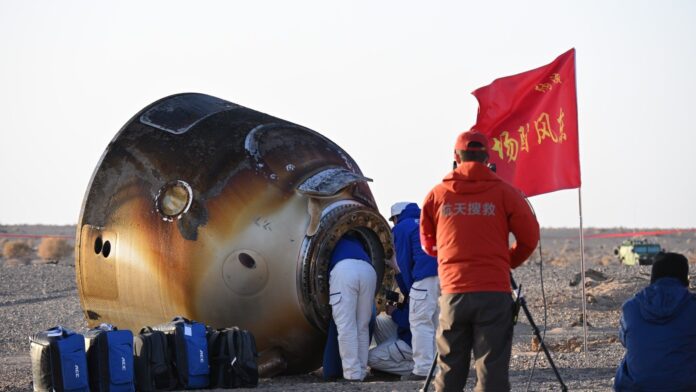Three Chinese astronauts safely returned to Earth on November 14 after a six-month mission aboard the Tiangong space station. However, their homecoming was anything but routine. Commander Chen Dong and crewmates Chen Zhongrui and Wang Jie had originally planned to depart in their original spacecraft, Shenzhou 20, but that launch was delayed after it sustained damage from a suspected piece of space debris.
The impact left tiny cracks in the viewport window of the return capsule, deeming it unsafe for re-entry according to the China Manned Space Agency (CMSA). To ensure the crew’s safety, they boarded the newly arrived Shenzhou 21 spacecraft – intended as their replacements – and departed Tiangong on November 13. This meant leaving Shenzhou 20, along with its valuable experiments, in orbit.
The unusual situation highlights a growing concern in spaceflight: space debris. This is not an isolated incident; the risk of collisions between operational spacecraft and defunct satellites or fragments poses a significant threat to future missions.
Despite the unexpected hitch, the Shenzhou 20 mission was still considered a success. The astronauts, who launched on April 24, conducted scientific research, performed spacewalks to install equipment, and engaged in educational outreach activities while orbiting Earth. This marked Chen Dong’s third spaceflight, while Zhongrui and Jie were making their debut journeys beyond Earth.
For now, Shenzhou 20 remains docked with Tiangong, acting as a floating laboratory until future plans for its retrieval are determined. Meanwhile, the newly arrived Shenzhou 21 crew will continue the work of the outgoing team. They’ll eventually return to Earth in an even newer spacecraft, Shenzhou 22, which is expected to launch sometime later, further demonstrating China’s ambition and capabilities in space exploration.
The incident raises questions about how countries can effectively mitigate the risks posed by increasing space debris while continuing to expand human presence in orbit. Finding solutions for this growing problem will be crucial to ensuring safe and sustainable access to space for generations to come.
































